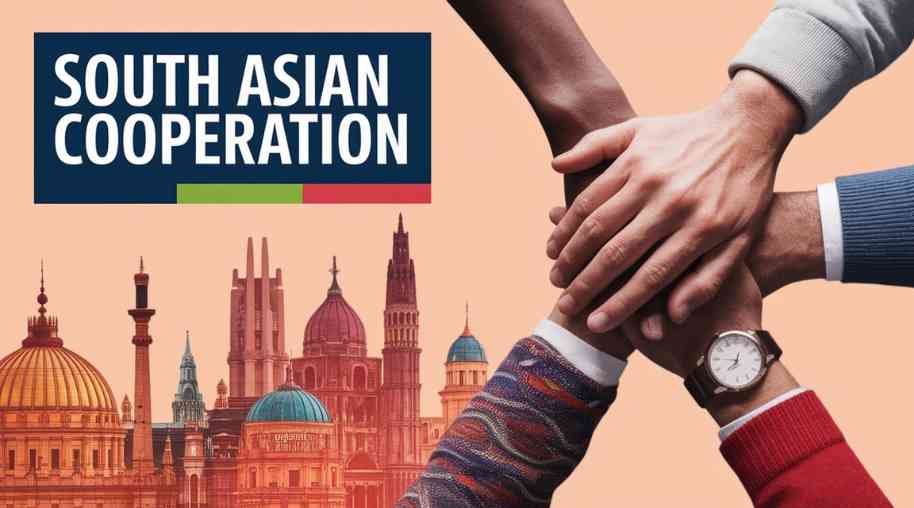SAARC Full Form-South Asian Association for Regional Cooperation
by Shashi Gaherwar
0 1007
South Asian Association for Regional Cooperation: Strengthening Regional Ties and Economic Growth
Introduction
The South Asian Association for Regional Cooperation (SAARC) is a regional organization established to promote economic, social, and cultural cooperation among South Asian nations. Founded in 1985, SAARC aims to enhance regional integration, boost economic development, and create a platform for collaboration in key sectors such as trade, health, education, and technology.

Member Countries of SAARC
SAARC consists of eight member states:
1. Afghanistan
2. Bangladesh
3. Bhutan
4. India
5. Maldives
6. Nepal
7. Pakistan
8. Sri Lanka
These countries collectively represent a significant portion of the global population and hold immense potential for economic and trade expansion.
Objectives of SAARC
The key objectives of SAARC include:
• Promoting Economic Cooperation: Enhancing trade and commerce among member nations.
• Strengthening Political and Diplomatic Ties: Encouraging peaceful coexistence and resolution of regional conflicts.
• Enhancing Social and Cultural Integration: Fostering people-to-people connections through cultural and educational exchanges.
• Encouraging Sustainable Development: Addressing issues such as poverty, climate change, and disaster management.
• Boosting Technological and Scientific Advancements: Collaborating on research and innovation for regional progress.
Major Initiatives and Agreements of SAARC
1. South Asian Free Trade Area (SAFTA)
SAFTA was established to facilitate trade liberalization among member countries by reducing tariffs and promoting free trade. It aims to strengthen economic integration within the region.
2. SAARC Development Fund (SDF)
The SDF was created to finance development projects focusing on social, economic, and infrastructure sectors to enhance regional growth.
3. SAARC Disaster Management Centre
This initiative addresses natural calamities and emergency response strategies, enhancing disaster preparedness among member states.
4. SAARC Food Bank
The SAARC Food Bank was established to ensure food security within the region by maintaining emergency food reserves.
5. SAARC Regional Centres
Several specialized SAARC centers focus on areas such as agriculture, human resource development, energy, and tourism.
Benefits of SAARC Cooperation
• Economic Growth: Increased trade and investment boost GDP growth across the region.
• Improved Diplomatic Relations: Strengthens bilateral and multilateral ties among South Asian nations.
• Enhanced Connectivity: Development of infrastructure such as roads, railways, and digital networks.
• Sustainable Development: Coordinated efforts in environmental protection and resource management.
• Cultural and Educational Exchanges: Strengthening people-to-people connections through academic and cultural programs.
Challenges Faced by SAARC
Despite its objectives, SAARC faces several challenges that hinder its effectiveness:
• Political Conflicts: Ongoing tensions between member countries, particularly between India and Pakistan, have slowed down regional cooperation.
• Bureaucratic Delays: Inefficiencies in policy implementation affect the progress of SAARC initiatives.
• Economic Disparities: Differences in economic development among member nations create challenges in achieving uniform growth.
• Limited Intra-Regional Trade: Trade between SAARC nations remains low compared to other regional organizations like ASEAN and the European Union.
• Lack of Strong Institutional Mechanisms: The absence of a binding enforcement mechanism limits the effectiveness of SAARC agreements.
SAARC holds immense potential to foster regional cooperation and economic growth. However, to achieve its objectives, member nations must strengthen political will, improve diplomatic relations, and enhance policy implementation mechanisms. Addressing geopolitical challenges and increasing intra-regional trade can significantly boost economic and social development in South Asia. With the right reforms and commitment, SAARC can emerge as a key player in global economic and political affairs.

Share:








Comments
Waiting for your comments